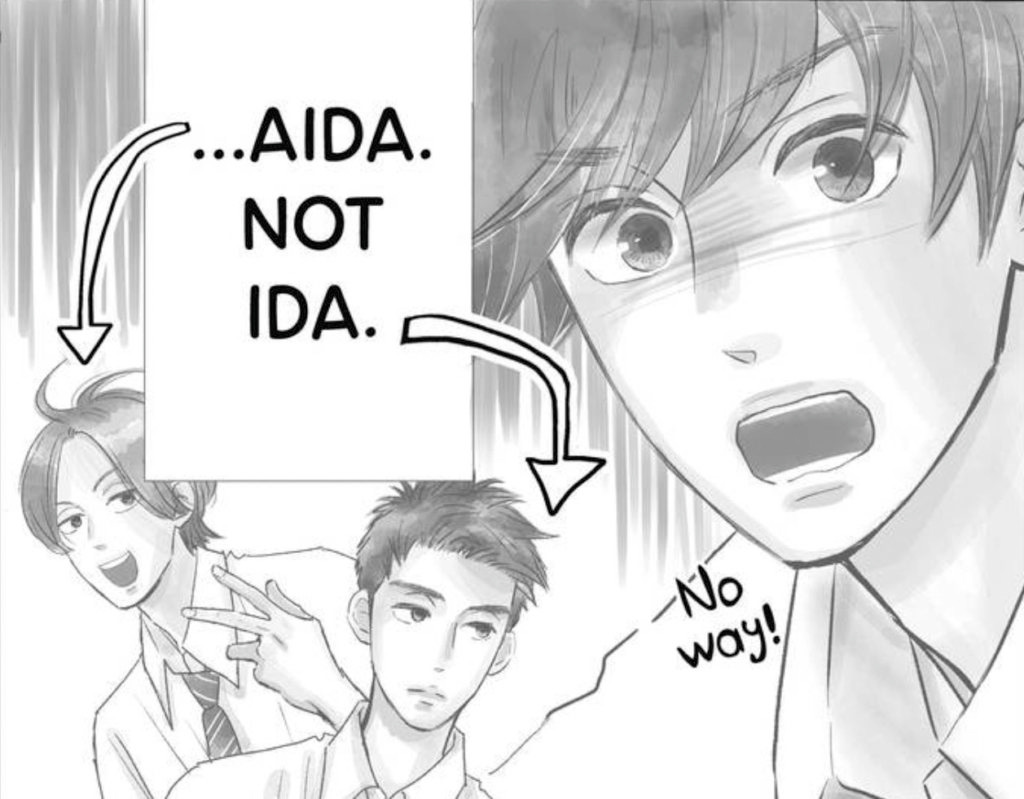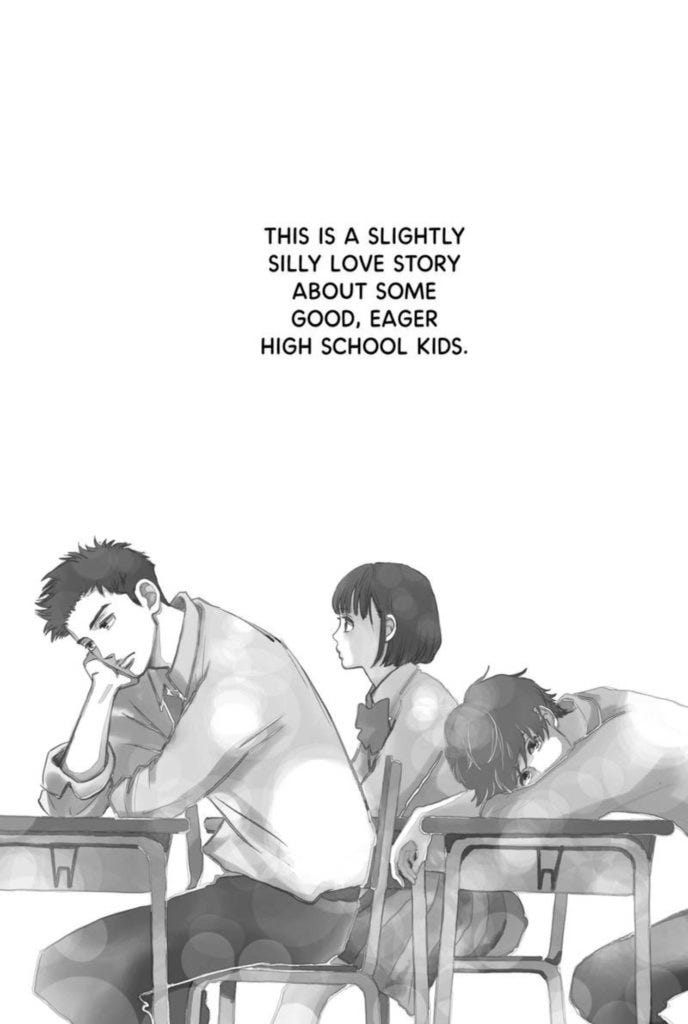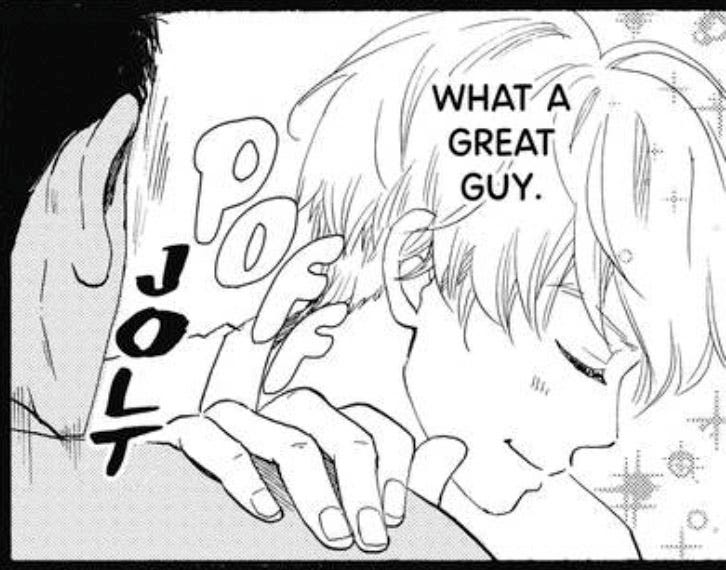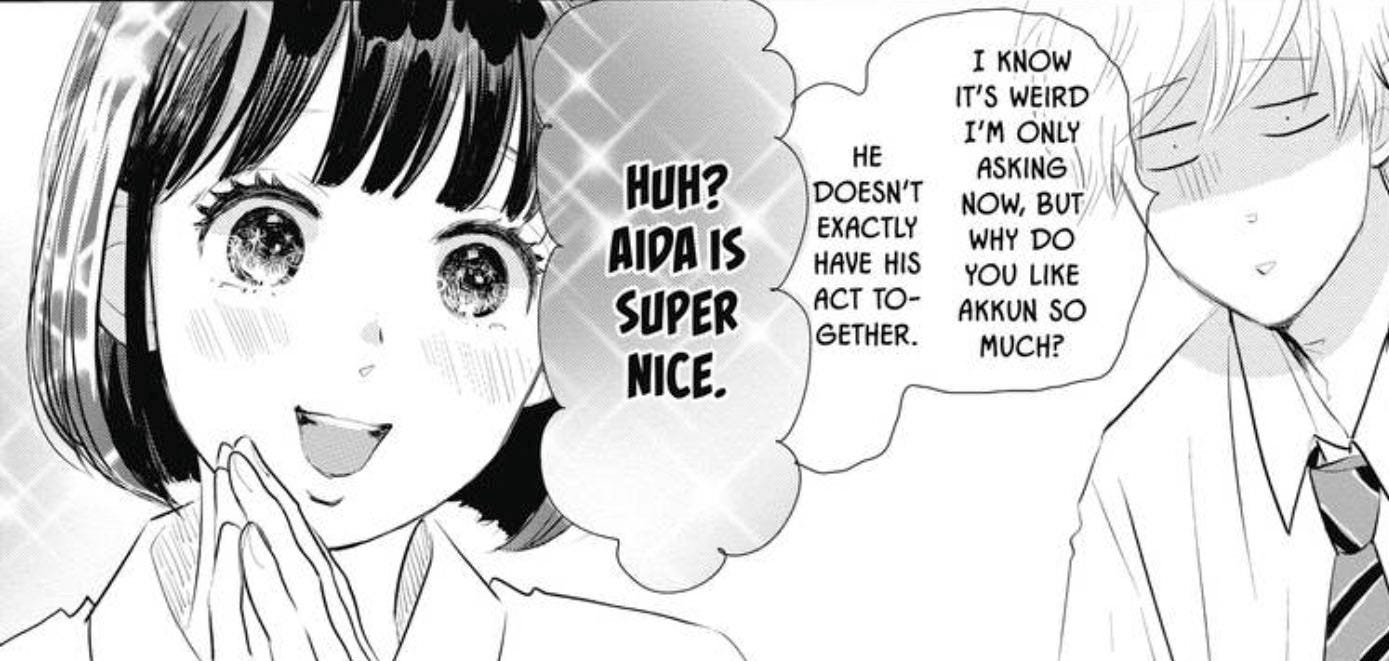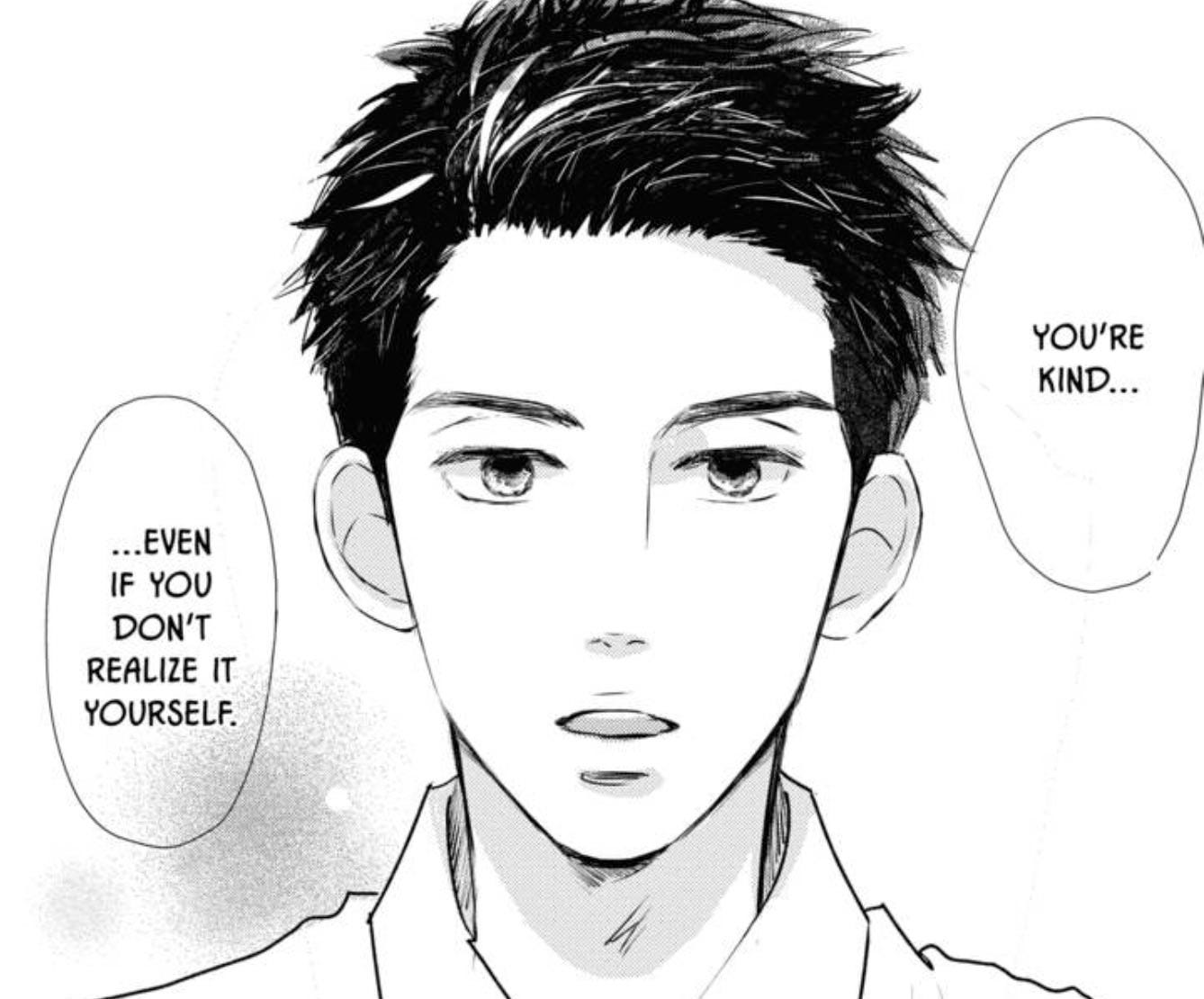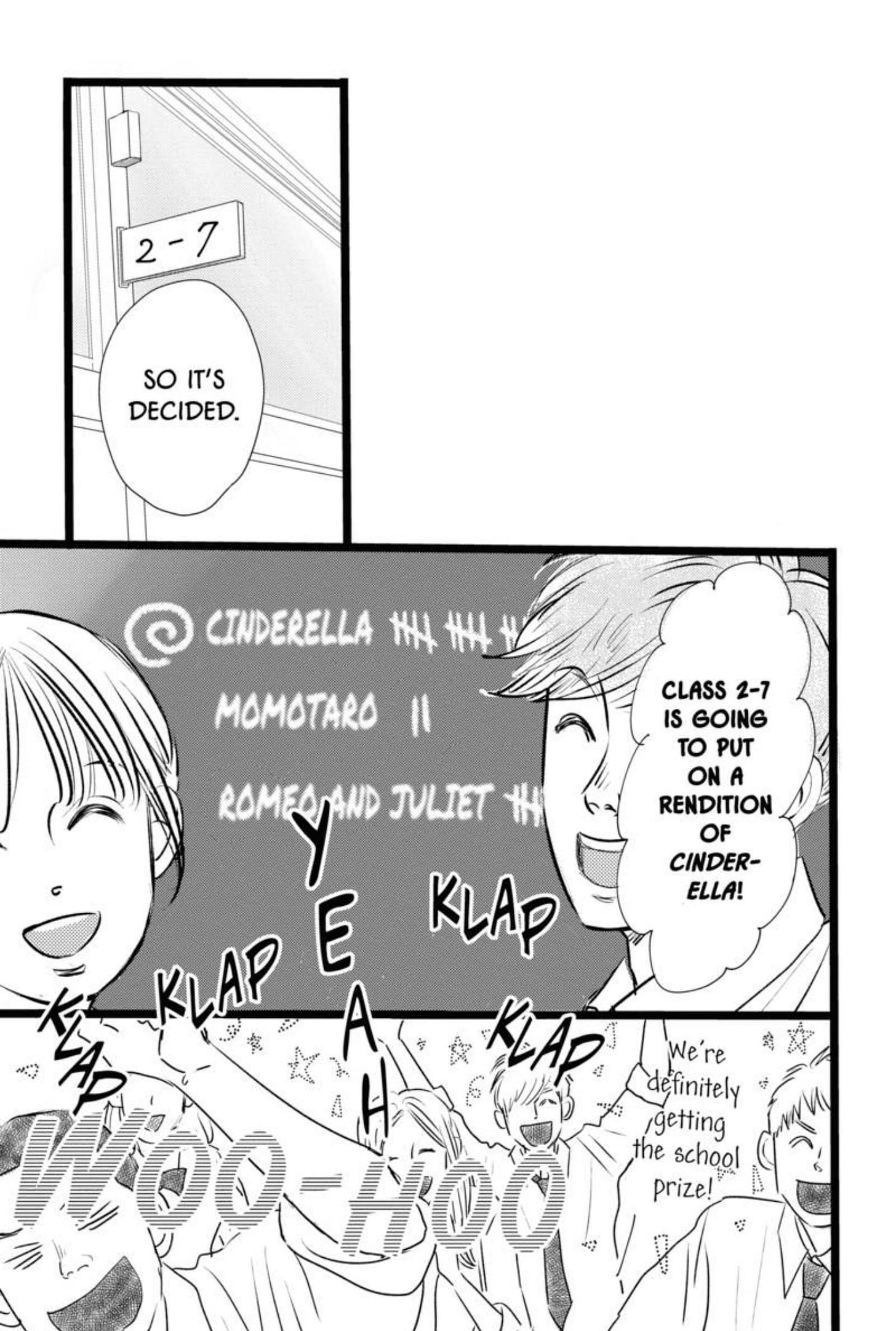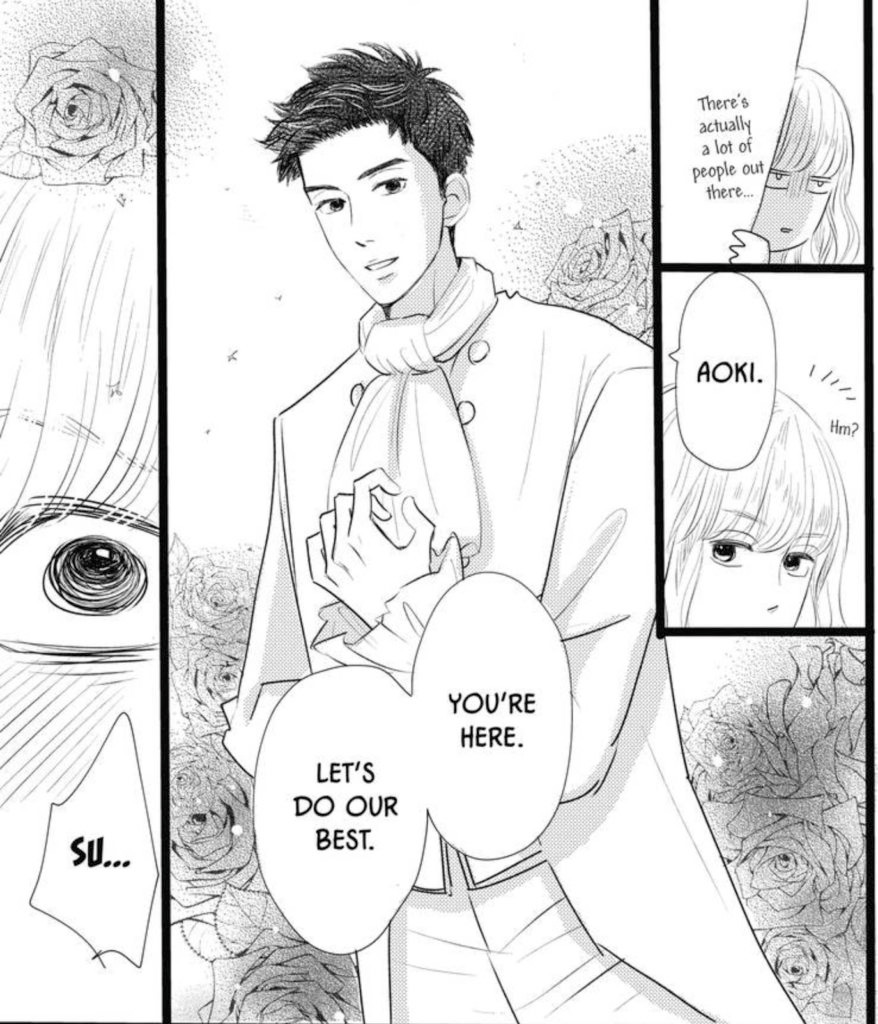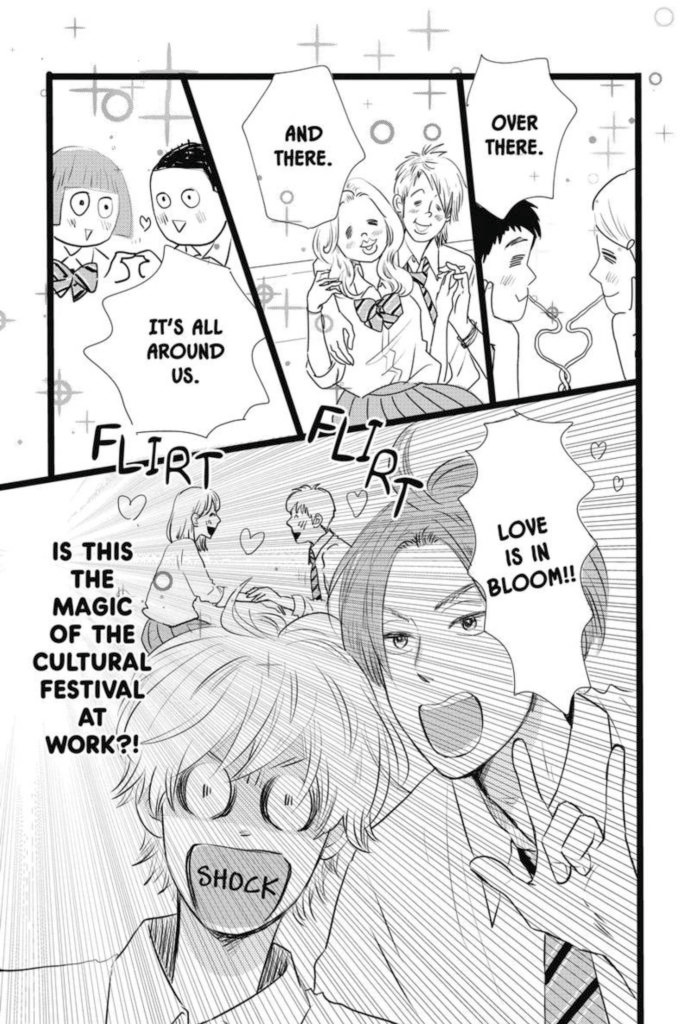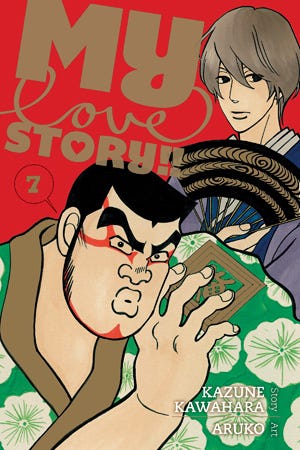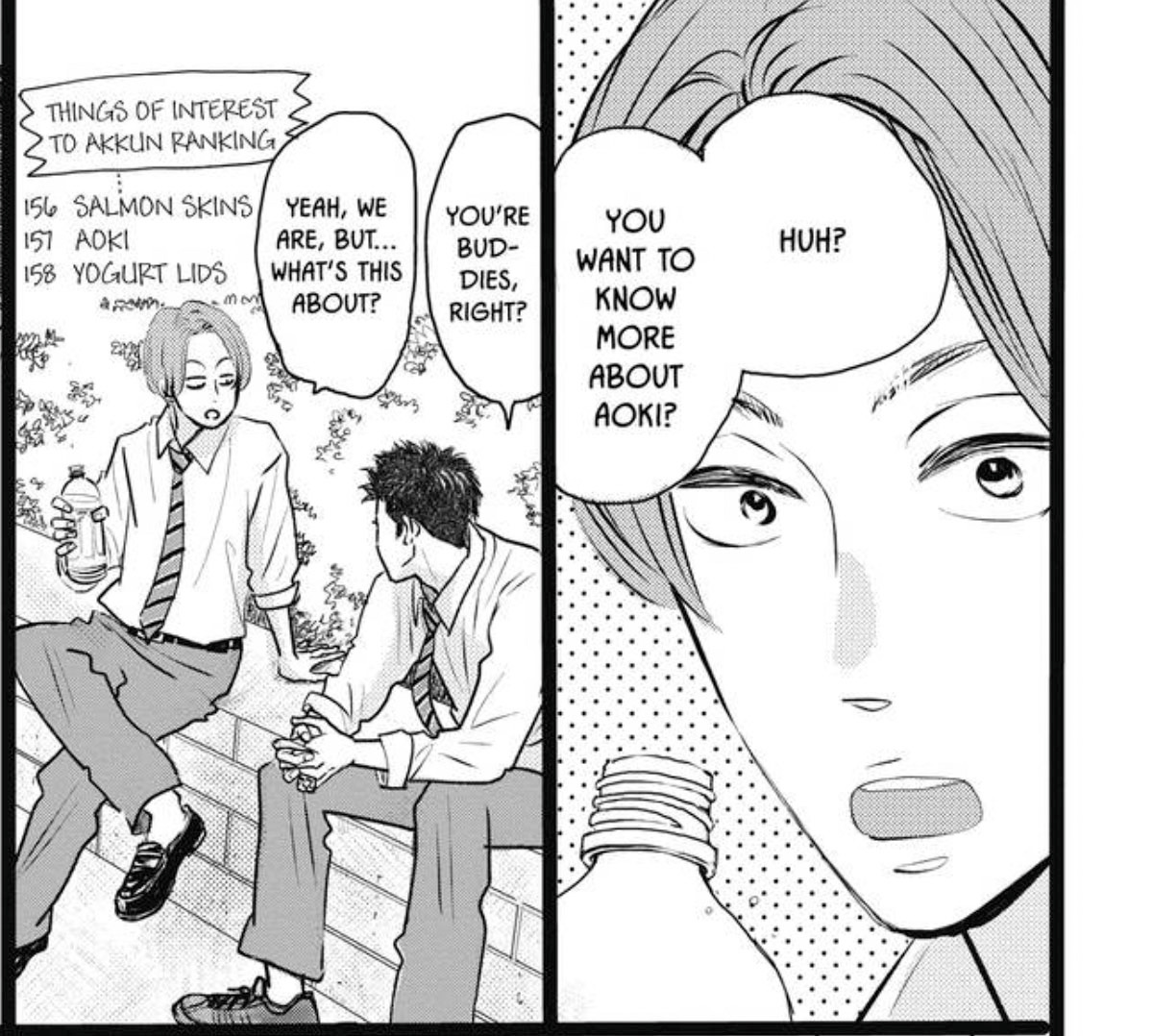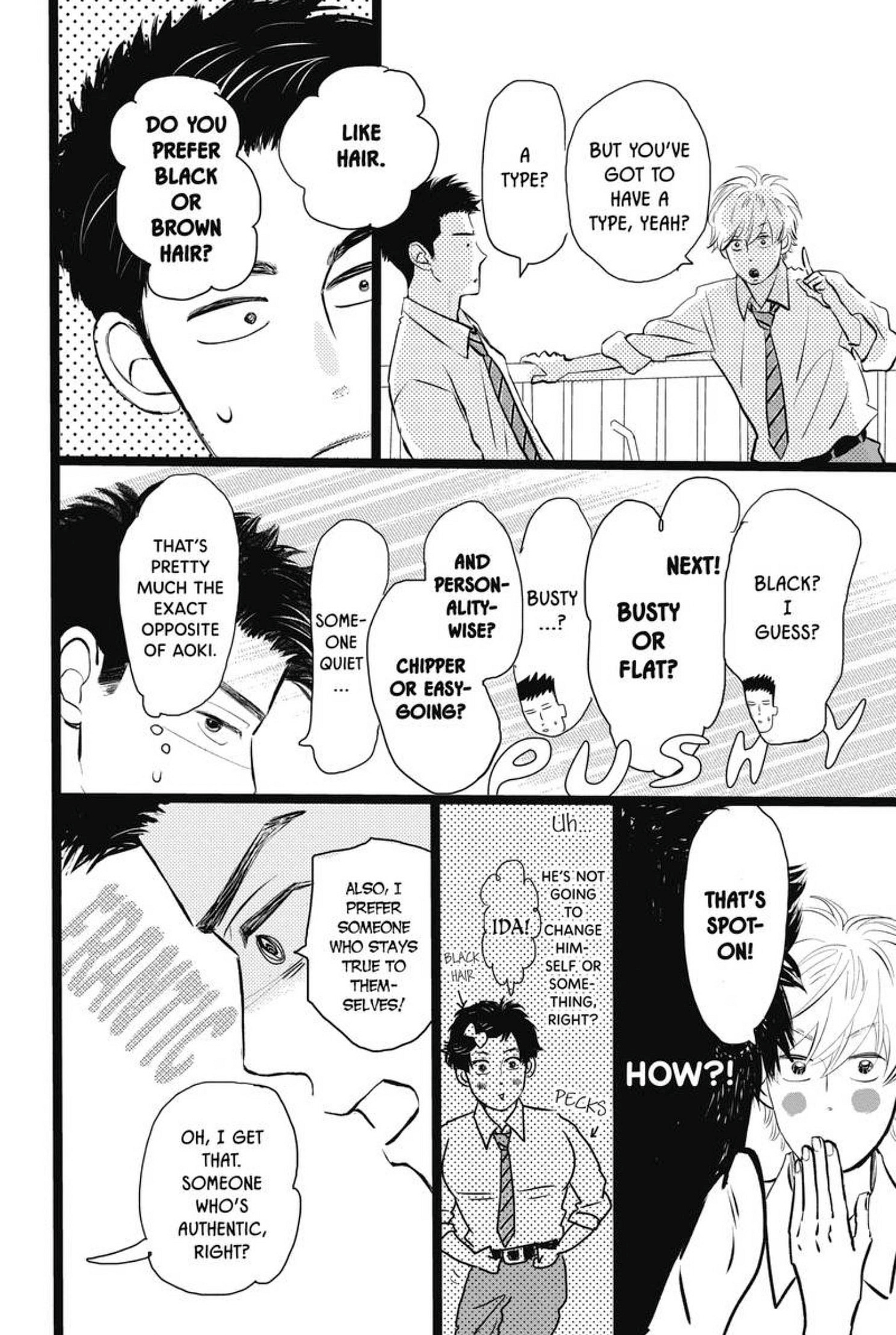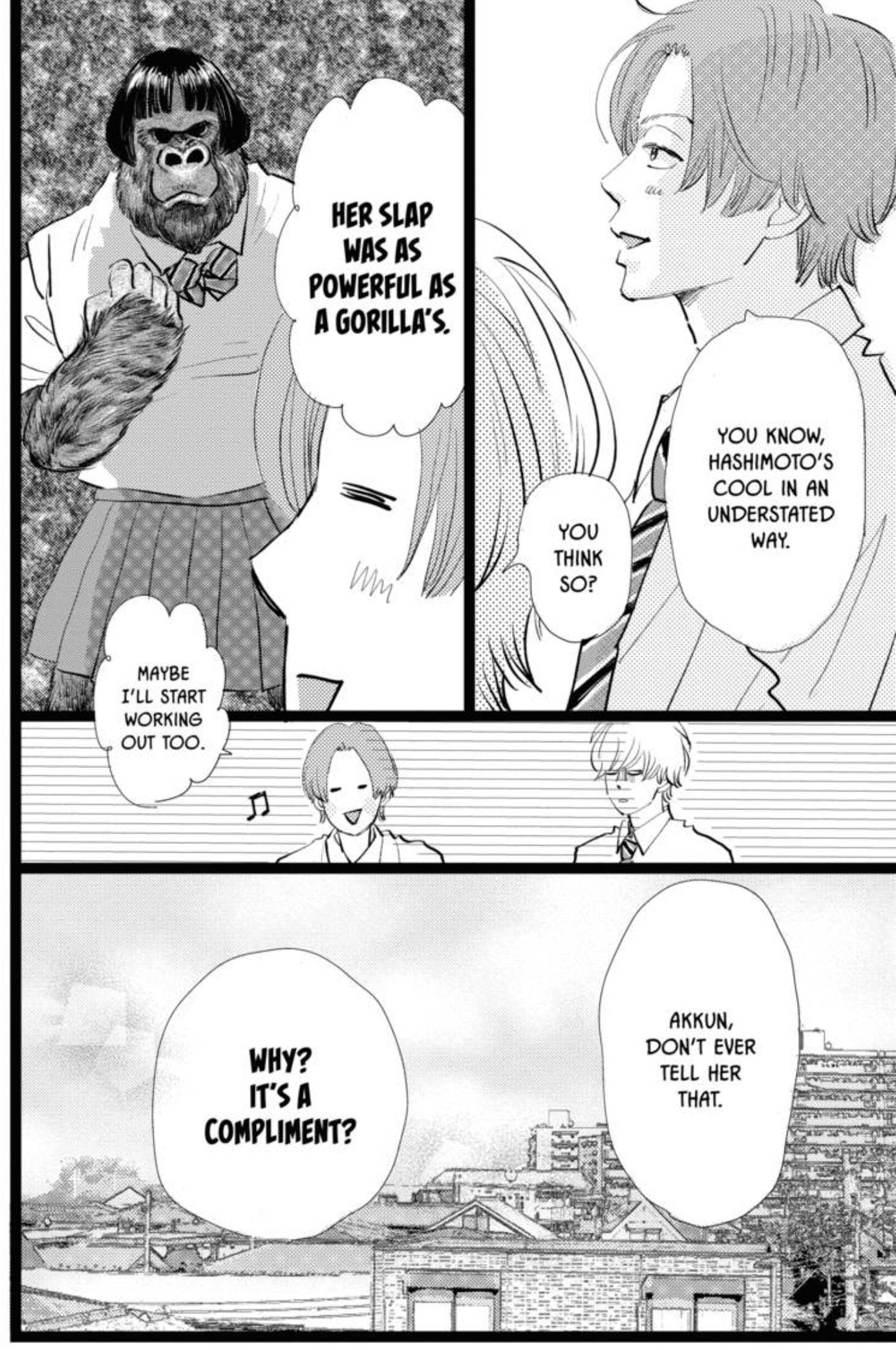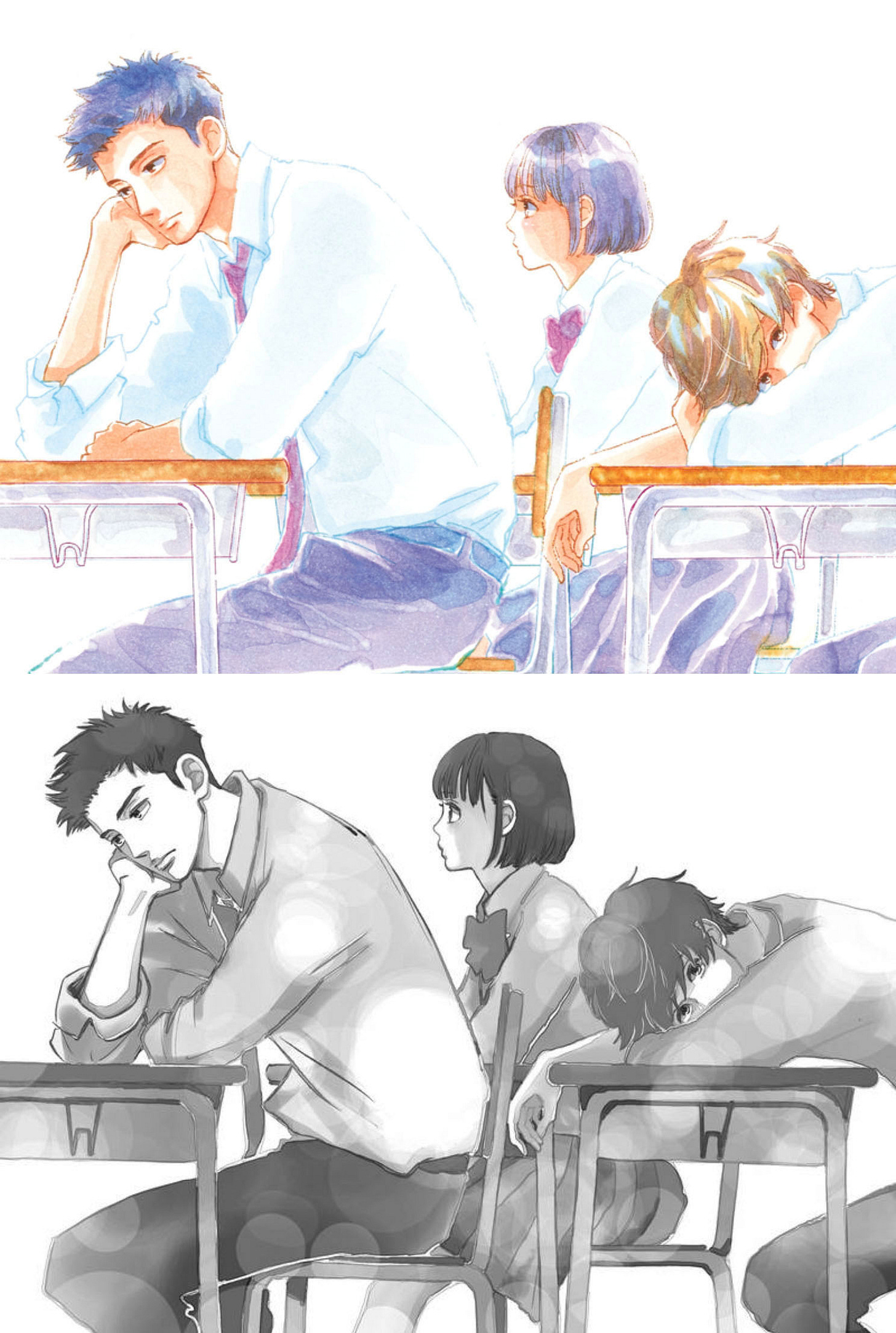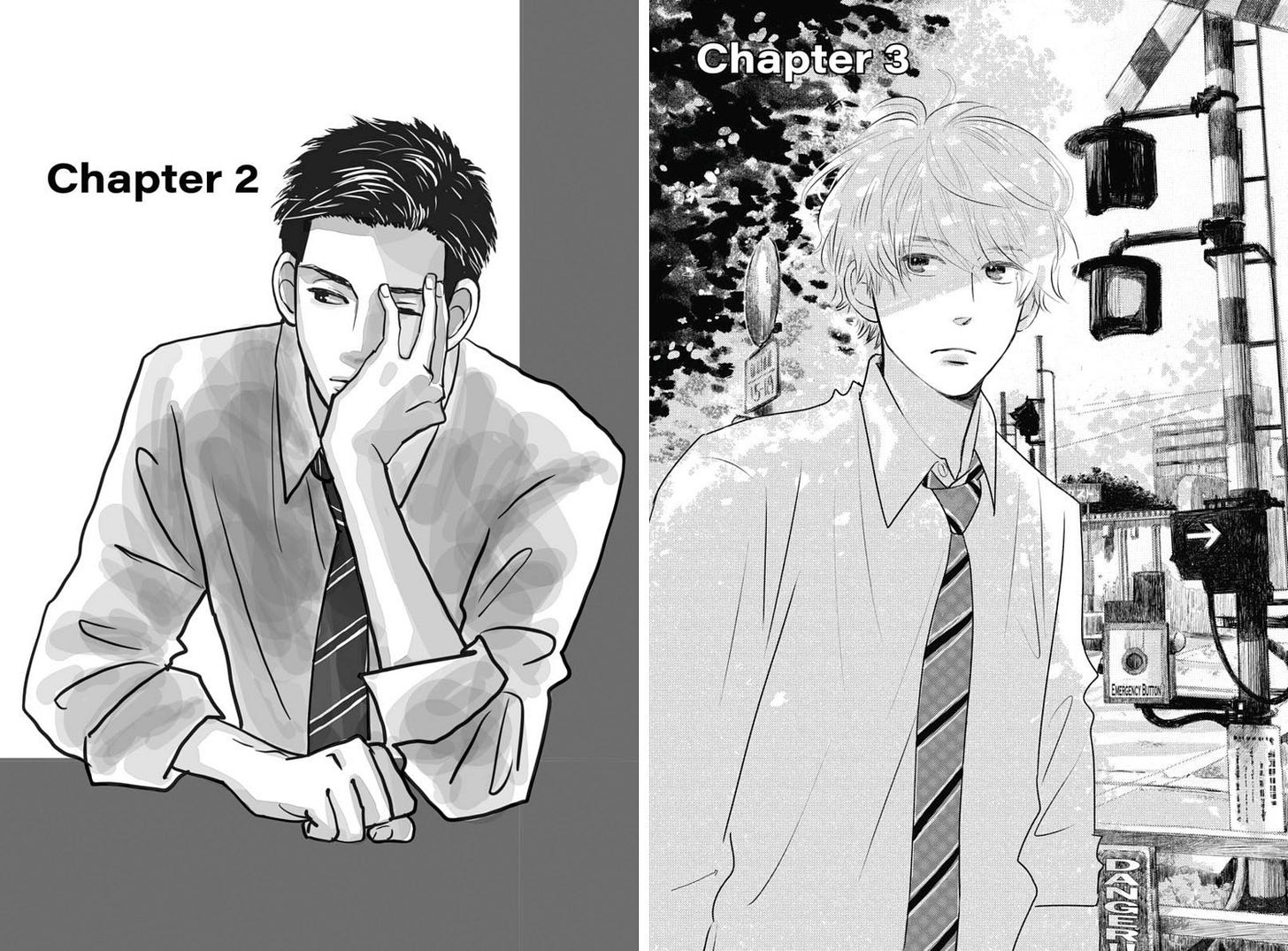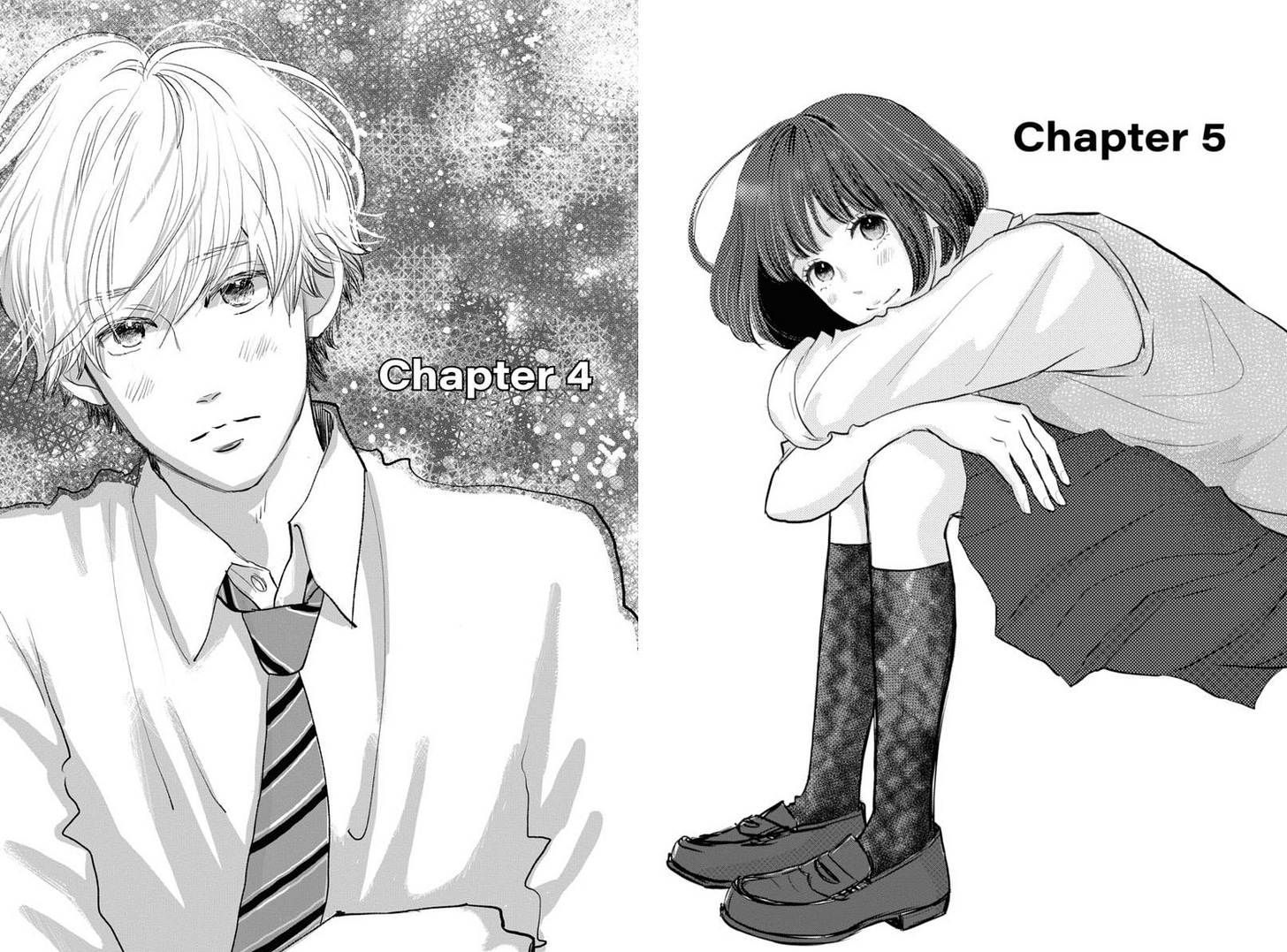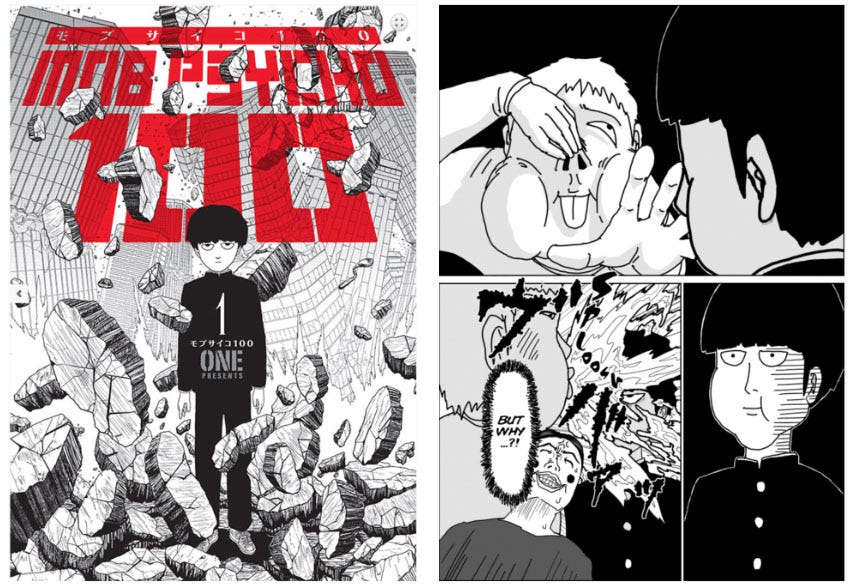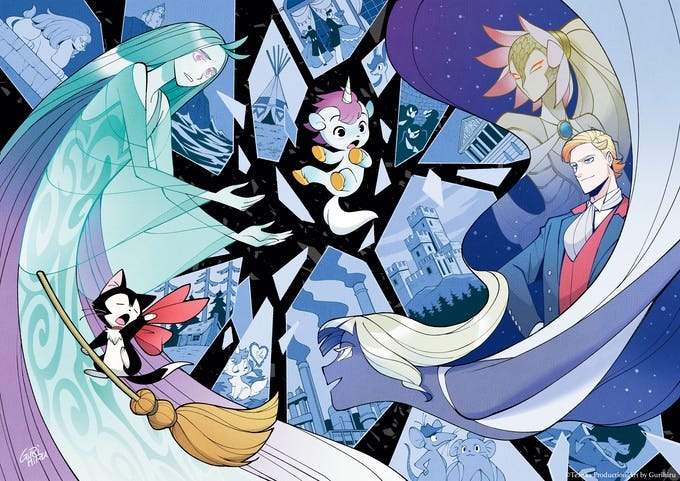PODCAST - Ep.62: My Love Mix-Up! Vol. 1 (Pt 1/2)
Covering the shojo manga that's kind of a boys love manga, but maybe not really? Kinda?
After the spicy romance of Dick Fight Island and Birds of Shangri-La, we veer back into something a bit sweeter and funnier with My Love Mix-Up! But is this shojo manga romantic comedy with a hint of boys love be something that even Chip can enjoy? We shall see!
Also this episode, we conduct a special Mangasplaining, Listen to Me! segment with Samuel Sattin, co-creator of the new graphic novel Unico: Awakening with Japanese artistic duo Gurihiru! Because of the length of the show notes this week, we pulled the notes for that portion, alongside some exclusive new artwork from Gurihiru, into a bonus newsletter this week! You can click that link, check your inbox for the other letter, or just visit the website/app at mangasplaining.substack.com.
Also, hey look, we figure out the embed! You can listen IN THIS POST if you want to! Or follow us on one of these services:
Google | Apple | Stitcher | RedCircle | Amazon | Radio Public | PocketCast | Spotify
Alright, on with the episode!
My Love Mix-Up! Vol 1
By Aruko and Wateru Hinekure
Translated and adapted by Jan Cash
Touch-up art and lettering by Inori Fukuda Trant
Design by Yukiko Whitley
Edited by Nancy Thistlewaite
Published by Shojo Beat / VIZ Media (Print & Digital)
Show notes by Christopher Woodrow-Butcher and Deb Aoki. Audio editing by David Brothers.
00:00 In her introduction, Deb mentions that we might never be able to get over the ‘shojo deficit’ on Mangasplaining, due to the fact that, while we’ve been pretty good at picking a fairly balanced set of books by both male and female authors during the podcast (I think we’re close to 50/50 at this point), genre-wise, or audience-wise, we’ve leaned really heavily towards seinen manga, or comics targeted (primarily) for older-male readers.
It kinda makes sense, since we’re picking with Chip in mind, and he is a much older male reader, but ultimately the Japanese genre classifications, both in Japan and here in the West, are exceptionally broken, IMHO, in this, our year of the Lord 2022. Still, I did think it might be interesting to add up the genres so far, and see how (as of this episode) things stacked up.
Mangasplaining “Genre” Tally
Shojo Manga: 5
Shonen Manga: 11
Josei Manga: 5
Seinen Manga: 29
BL Manga: 3
‘Other’ Manga: 6
These are pretty loose numbers, but basically we’ve covered as much seinen manga as we have every other age/genre classification of manga, give or take. Probably because we started the podcast off with AKIRA and that kinda set the tone? So yeah, Deb is right, there’s a huge shojo deficit so far on the podcast, and josei manga too (to an extent). But Season 3 is kicking off in a much more balanced way, as we find our footing, and we talk quite a bit about the nature of picking books for Chip, this episode too.
Which is to say: Thank you for requesting we cover more/different stuff, especially ‘indie’ manga! Thank you also for recommending we cover the same/popular/mainstream stuff too! If you REALLY want to put a suggestion in for something we should read, check out the show notes from our last episode, where we requested reader’s suggestions for first chapters of manga series that we’ll make Chip read for a future episode. (Scroll down to 26:55, the bit just after Food Wars.)
One more thing: Pronunciation Guide!
The name Aoki is pronounced like Deb’s last name, ah-oh-key.
The name Ida is pronounced eee-dah.
The name Aida is pronounced like the English pronunciation of the word Ida, so eye-dah.
Hashimoto is pretty straightforward.
If you don’t know any Japanese, it’ll take a few minutes to pick it up while you’re reading, but that fact that a western reader is likely to pronounce Ida and Aida the same just adds to the fun, IMHO.
01:00 Here’s how VIZ describes My Love Mix-Up!
Aoki has a crush on Hashimoto, the girl in the seat next to him in class. But he despairs when he borrows her eraser and sees she’s written the name of another boy—Ida—on it. To make matters more confusing, Ida sees Aoki holding that very eraser and thinks Aoki has a crush on him!
Shojo Beat
02:00 David says that this manga excels at a few things, including great facial expressions, and he’s absolutely right. Here’s just some of my favourite facial expressions from the first volume.
03:55 The first official page of the manga really does let you know what you’re in for, and it sort of sets the tone for just how sweet… and silly… this manga is.
04:00 This is a manga where everyone is constantly talking about how nice everyone else (in their circle) is, both to each other and to strangers. Even their ulterior motives are super sweet and kind. It’s a very soothing manga…
I think Chip is right, introducing the ‘play’ trope out of nowhere in chapter (3?) is, well… it’s bad writing from a distance.
BUT! If you’re a dyed-in-the-wool manga fan, especially a shojo manga fan, then you’ve been waiting for ‘the school play chapter’ since you opened the book – it’s just something that regularly occurs in shojo manga.
Interestingly, all 4 of us forgot to mention that the school-play stuff was a key component to the introduction of the two new weirdly-abusive-to-each-other characters at the end of volume 1 of Monthly Girls’ Nozaki-Kun, which is all about shojo manga! (We counted it as shonen, since it runs in a shonen magazine in Japan… which is another indicator of why genre/age classifications are busted and silly).
06:20 “Why would people write this?” – Chip Zdarsky.
08:05 Okay, yeah, there… aren’t a lot of backgrounds in this one. Again, I didn’t really notice…
10:05 I don’t know about you guys, but I’m kind of getting the feeling that Chip did not care for this particular manga.
10:49 [Deb:] Fruits Basket is one of the most popular, most beloved shojo manga series ever published in N. America, but it is, in my humble opinion, NOT something you recommend to a reader who is new to manga.
[Deb:] Why, you ask? Well, the whole first few volumes are just silly. A good-natured girl meets two male classmates from a wealthy family who just happen to turn into animals of the zodiac when they’re hugged by members of the opposite sex.
Yes. Right. It’s as silly and far-fetched as it sounds.
But if you stick it out, and read maybe… oh, five or six volumes into this series, Fruits Basket becomes a really resonant, emotional series about a cursed, dysfunctional family, and how they learn to overcome the pain and hurtful patterns of their relationships with their parents, their siblings, their cousins and their significant others. It’s surprisingly deep and lovely story, but it’s NOT a series you can easily recommend to someone who’s new to shojo manga, much less manga in general.
If you want to get a taste of Fruits Basket, check out Yen Press’ 12 “collector’s edition” omnibus volumes that reprint the series that was previously published by TokyoPop.
There’s also a terrific animated adaptation that came out recently (2019-2021) that is much more faithful to Natsuki Takaya’s original manga story that is worth your time to watch (provided you’re maybe on board with some shojo manga silliness at the beginning). Check it out on Funimation or Crunchyroll.
14:20 Not every manga… is a manga… for people who haven’t read much manga before.
15:00 Okay, even more to the point of the lack of backgrounds, this does have a lack of backgrounds (and good use of whitespace IMO), but as Deb points out it has a LOT of shojo backgrounds. In particular, Ida as Prince Charming, surrounded by blooming roses, on page 117, which really drives the point home.
16:00 “Since this is my first crush, I want to cherish it.”
Okay, we gotta dig in here.
1. Yeah no one talks like that,
2. …except in shojo manga, and the people, especially young women, who read shojo manga, talk exactly like this because it reinforces itself. This is a story that, much like Paradise Kiss, features the characters reading the manga magazine that they’re serialized in to try and understand some of the nuance of what’s going on. It’s absolutely self-referential, it’s comics for fans of these types of comics.
Which isn’t to say that you can’t balk at that, as Chip does here, if it doesn’t hold up to your desires for story or your expectations for the work. You can take a pass, and no one needs to come for anyone in comment sections with knives out. Probably.
Also: I really did like Gotham Central and Brubaker’s a good dude. It seems to be largely OOP at the moment, but maybe your local comic shop will have a copy on the shelf, it came out in 2 or 3 different versions.
16:45 Speaking of little asides: I didn’t mention it at the time, but I really like the font they’re using for the narration boxes. Very cool. I like the Anime Ace font just fine, but it’s nice to see them… Mix It Up… a little. 😉
IS THIS THE MAGIC OF THE CULTURAL FESTIVAL AT WORK! Haha, oh man.
Also as an aside, I love how the artist basically doesn’t give a dang about the characters who don’t get lines. Like they’re drawn with the hash-mark eyes to start, but by that third panel up top they’re basically muppets, reinforcing just whose story it is. Love that panel.
17:00 I think Deb, David and I all mentioned the artist’s previous series, Ore Monogatari! / My Love Story!!, both when this title was chosen, and now during the episode. We got asked quite a bit why we didn’t pick that series instead, and there’s a couple reasons.
1. Deb really dug this one and wanted to share it! Lol.
1a. [Deb:] Also, I thought picking My Love Mix-Up! would be a funny segue from all the saucier BL manga we just talked about!
2. There’s a real, tangible benefit, especially to more marginalized genres like shojo and alternative comics, to picking a new work. Sales on early volumes are the greatest indicators of success for a manga, besides getting an anime adaptation. We’re picking this one because it’s serializing RIGHT NOW, and so it’ll probably be in print, and buying copies of volume 1, 2, and even 3 will help increase the chances it stays healthy and does well… Which means getting more shojo manga into the market!
It doesn’t mean we’re only going to pick ‘new’ manga, or only pick manga for sales/support reasons… Hell, my next pick (recording this week) is Cross Game by Mitsuru Adachi, but we’re out here doing the podcast because we love manga, and want to support the authors and the folks who bring it to North America whenever possible, and doing that for more recent works really helps move the needle in a positive way. 🙂
Which isn’t to say that you shouldn’t go read My Love Story!! as well, it’s amazing. It has some of the best shojo manga covers of ALL TIME. But also: We’re doing an episode on the good new (gay) one right now, maybe if y’all respond well (or beg for it in the comments) we’ll go back and do My Love Story!! at some point, too! 😀
19:50 So yeah, as I said above, this is a self-referential shojo manga. In addition to the image up top, the author afterword also has a bunch of people reading the magazine, in awe of what you just read:
Also the “power of the cultural festival” bit is pretty… shojo manga as well. This is a book that’s VERY aware of genre conventions, and is definitely playing with them more than a little.
20:00 Sometimes David just slips things into the edit so that we can all be surprised when we listen to the episode, and that’s just great. 😉 Here’s the video if you wanna go see the whole scene for yourself.
21:49 One of the things I like best about the podcast is that we’re all different readers, and different stuff stands out to all of us. Honestly, none of the stuff Chip called out, even the “cherish my first love” quote, really made much of a negative impression on me when I was reading the book. That cuts both ways though, as Deb has called out an amazing, subtle little background joke that I ALSO completely missed. The little cut-away to what the character Aida thinks of his friend Aoki, just where he ranks in the hierarchy of random things he thinks is interesting, is as hysterical as Deb makes it out to be.
On second (and third) read-through, I noticed a ton more jokes too, and it was delightful. This one about Ida worrying that Aoki will change himself to fit what Ida likes, I don’t know how I missed this.
24:54: Oh, Chris liked the one with the one hero who doesn’t look like a shojo hero? How Surprising.
[Deb:] There’s also a live-action adaptation of My Love Story!! that had a promo poster that directly referenced the manga cover artwork.
[Deb:] Speaking of live-action adaptations, there is a live-action TV show version of My Love Mix-up! is now airing on Rakuten-Viki.
25:20 Christopher shouts out the shojo manga Prince Freya, from VIZ. A simple village girl must take the place of a powerful warrior prince to prevent chaos from descending on her kingdom. Gender-swapping reverse-harem with beautiful art shojo manga… Maybe it’s FOR YOU?
27:30 Hashimoto is strong like a gorilla!
[Deb:] Yeah, Aida… I wouldn’t tell Hashimoto this particular… compliment.
28:30 Yeah, the digitalness of this feels a bit… dated? Or like it will be dated? Looking back at My Love Story!!, Aruko’s work did have some ‘digital’ feelings to it, but it seems to be really ramped-up in this series. Compare these two images that we mention, the same image from the cover and the title page, and you can see how far she’s pushing the digital work.
On re-reading this one a third time, you can see the approach to screentone and digital additions change pretty dramatically. I can’t tell if it’s Aruko (or her assistant) finding their feet, or if there’s a conscious decision to try and push things artistically. I think it’s the latter, because you can see… well… let me just show you. Here’s the first 3 chapter spreads.
Chapter 1 is wild. Full on digital illustration, overlapping textures, a knock-out texture overlaid over the whole thing, it’s really busy and a lot. And like… I can’t help but think that this was PROBABLY printed in colour in the original, and so it’s suffering even further for being printed in black and white.
There you go to chapter 2, and you can see (as David mentions in a few minutes) a completely different line weight, colouring with a very digital brush, it’s all very… like, surprising I guess? It’s not unskilled though, you look at little things like the blob of shadow on the hand on Ida’s face, and that’s a nice bit of skill. But those first two compared to the chapter title page for Chapter 3? WOW. Something happened. It’s still clearly digital, with the speckled shading on Aoki’s shoulders, sunlight streaming through trees. And the backgrounds! Clearly a paint-over from a photo, but really well integrated, it’s super great. But such a change.
Let’s see where it goes from here?
Chapter 4 is a smoother anime style of shading, with a LOT of attention paid to the hair… and just a dog’s breakfast of a background on that one. Lol. But then Chapter 5 is pretty similar to Chapter 4, with even more attention paid to the hair, and a realistic pattern added to the socks. Looking from Chapter 1 to 5 you can see a pretty clear progression. It’s really neat!
I don’t usually do this sort of stuff in the notes, but I thought it was interesting. 🙂
30:20 Okay, ONE MORE hilarious face. In this panel, because of the way it’s set-up, you can’t see Aoki’s horrifying/hilarious reaction face, so the artist just pops it on the back of his head… which makes it even better!
31:17 There’s a lot of screentone going on in this double-page spread. Does it work? I honestly don’t think it works.
Great scene though!
32:50 Speaking of digital rendering, I think I covered it on the podcast, but this image of Hashimoto’s hair from page 169 is a good example of just how… digital… the screen toning is in this manga. It’s also interesting that this panel goes from more flat screentones to a level of detail and depth usually reserved for that chapter-page-type-illustration.
34:40 Deb references BL manga like I Cannot Reach You, by Mika, published in English by Yen Press, and Sasaki and Miyano by Sho Harusono, also published by Yen Press. Two high school BL manga that have a real will-they/won’t-they slow burn vibe, that you might dig if you enjoyed the BL aspects of this manga.
35:00 [Deb:] For you young ‘uns, the “You got my chocolate in my peanut butter!” quote is a reference to an old Reeses Peanut Butter Cup commercial from the 1970s.
39:50 David was a Spider-Man kid, and so his ‘window’ into adult life through comics was Peter Parker and Mary Jane being married. I was more of an X-Men kid, so mine was… I guess Scott and Jean? And Madelyne and Alex? Which is truly insane. Explains a lot.
41:30 The character for love and weird is the same…
42:30 David is gently, gently referencing the author ONE, who has drawn the comic Mob Psycho 100. His art… well it looks like a writer drawing a book, and it doesn’t look a lot like what we think of ‘professional’ comics. It’s naive and kinda great. I think we’ll have to do this at one point, because Chip won’t have any idea what hit him.
[Deb:] You too can check out the madness of Mob Psycho 100 by reading the manga (which Dark Horse is publishing, or watching the anime, which is streaming on Crunchyroll. Incidentally, ONE is also the author/creator of One-Punch Man, a manga series we will surely, someday talk about on Mangasplaining.
43:00 Deb mentions the shojo manga High School Debut by Kazune Kawahara and also published by Shojo Beat/VIZ. She liked this tomboy shojo manga a bunch.
This also introduces a REALLY interesting notion though, because Kazune Kawahara is the writer/artist of High School Debut, but ‘only’ the writer of My Love Story!!, which she partnered with Aruko. Off-air, David, Deb and I were talking about creators being writer-artist teams in Japan, and whether that happened more or less often in shojo manga than in other genres. I think it’s really interesting, because it brings in all kinds of ideas about the editorial system in Japan, about partnerships, the difficulty of drawing regular manga, it’s pretty cool. I think we settled on “we need to get a shojo expert on the podcast” for a “Listen to Me!” segment. Maybe in the future?
[Deb:] High School Debut has some of the good-natured, odd-couple romantic comedy we see in My Love Story!! and it’s just charming as all heck. It’s available now as five volumes of 3-in-1 omnibus editions from Shojo Beat / VIZ Media, so check it out if you can!
43:50 Like we said, having a book that you can actually legally buy is a big part of the podcast.
49:00 We talked a whole bunch, didn’t we?
Anyway, I just read volume 2, and it’s great, and has stuff that I think Chip would find really satisfying and also super hate, and that’s kinda perfect too. Once this is uploaded I’m gonna go settle in with volume 3. And that’s this week on MANGASPLAINING!
51:04 It’s time for THE BREAK!!
Mangasplaining: Listen To Me! With Unico Awakening Writer Samuel Sattin
In this episode of Mangasplaining: Listen To Me, we talk to writer Samuel Sattin about his new collaboration with Japanese artistic duo Gurihiru and Tezuka Productions to produce a brand new ‘reimagining’ of Tezuka’s Unico. They’re using Kickstarter to raise funds for this project, and as of the day that we’re posting this interview, there’s 15 days left to jump in and reserve your copy, plus get in on some of the cool prints, books, pins, t-shirts and other goodies that you can only get if you kick in some $$ for this Kickstarter campaign.
Head over to read the show notes for this bonus interview AND see some exclusive Unico Awakening sketches by Gurihiru, just for Mangasplaining readers!
1:25:25 BREAK #2!
Now it’s time for SHOUT-OUTS!
David shouts-out the work of Becky Cloonan, which he was reminded of during our brief visit to Dick Fight Island a couple weeks back. The slightly-rough, muscly, lean dudes of Dick Fight Island gave us the same sort of Becky Cloonan dude vibes as the station manager from allll the way back in our Wave, Listen To Me episode.
Here’s her Instagram and her Big Cartel shop!
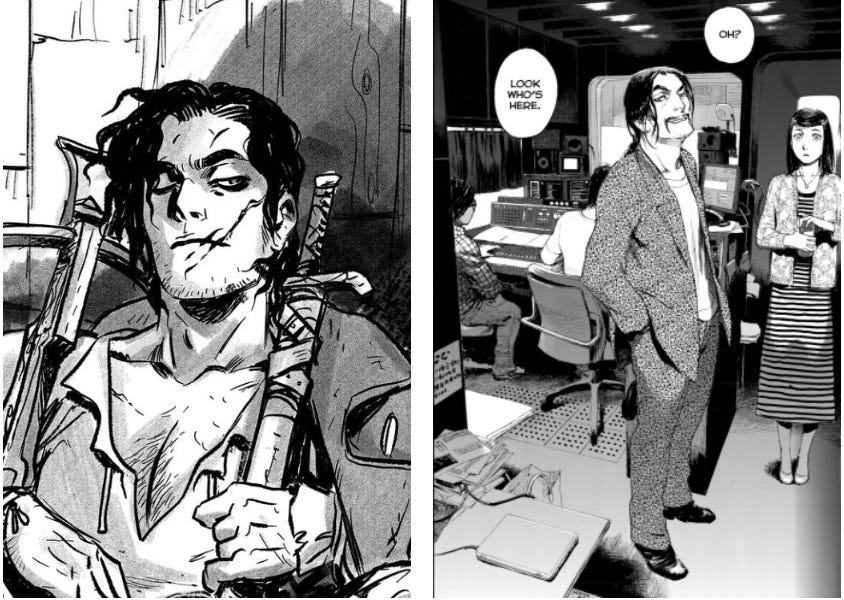
Deb and David then invent the new acronym MIALF, which is borderline-saucier than anything else we talk about in this episode!
Chip shouts out the comedy special Rothaniel, by comedian Jerrod Carmichael. Here’s a clip from the special. It’s a lot saucier than the rest of this episode, but it looks great!
David also really digs Carmichael’s work, and tells you to go check out more of his work, so here’s a link to his Wikipedia! https://en.wikipedia.org/wiki/Jerrod_Carmichael
Deb shouts out the anime Ranking of Kings, which I’ve heard so much about and wanna watch.
[Deb:] It’s currently streaming on Crunchyroll, and it’s one of those series that you should watch without knowing too much about what the story is about, because the surprising twists will just be that much more satisfying and fun to discover. Trust me, it’s much more than the usual fairy tale fable it seems to be at first.
Christopher shouts out MangasplainingExtra.com, where he and Deb and Andrew have been serializing manga and creating bonus articles for YOU to read! Just in time for this episode to go live, we actually created this landing page (which will continue to be updated) which links to all of the manga we’ve serialized so far, both free and subscriber-only.
Also here’s that food article that Deb wrote we mentioned too:
And that wraps up this week’s episode of Mangasplaining! We hope you enjoyed it, it was a long one! 😀
Please support your local comic and manga specialty shop when purchasing these books, and you can find one near you at comicshoplocator.com. You can also check your local library for print and digital lending options, they have TONS of manga! Also, check us out at MangasplainingExtra.com, we’re doing cool stuff over there. Finally, thanks to D.A.D.S. for their musical accompaniment this episode.





